Comfortable toilet height: what should it be?
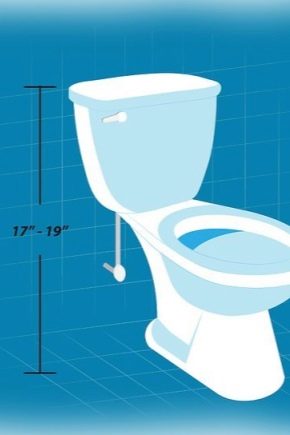
The dressing room does not take the last place in the house, the comfort and tranquility of the consumer depends on its design. With the development of new technologies, some nuances of installation and fixing of the toilet have appeared, taking into account individual factors (size of the toilet room, consumer preferences). Subject to all the rules and correct adjustment of the height of the toilet, you can create the most comfortable use of plumbing.
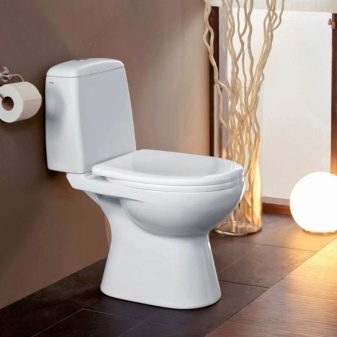
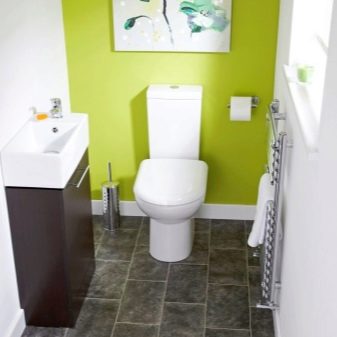
Features and types
There are established norms for the height of the toilet bowl, they are identified by engineers and are indicated in SNiP (Building Norms and Rules) - this is a kind of constitution for the construction world. Initially, the standard height was set to 40 cm. It is suitable for families with children and takes into account the ease of use for both adults and children. But in our time, taking into account the growth and statistics, the norm for the height of the toilet bowl has become 43 cm. This is the standard size of the floor type toilets that can be found in all stores.
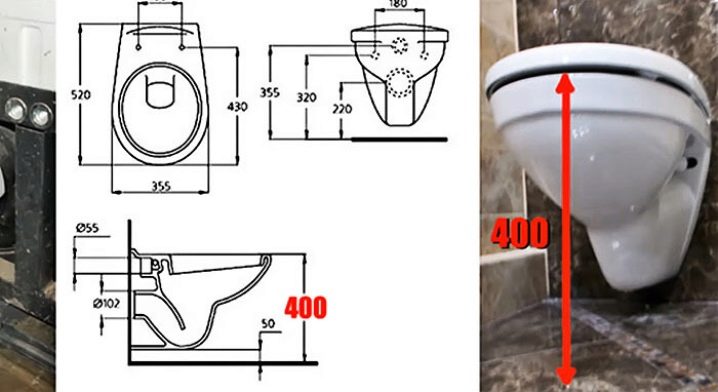
Toilets are usually of two types.
- Floor - this is the most popular model with an easy installation method, a toilet with a visible side. This is a familiar toilet bowl on a leg with an attachment to the floor, the cup for this device is the base. This model has been known for a long time and is widely used in apartment buildings. It does not really matter to take into account the height of this type of toilet bowl, since the models have a fixed height that coincides with the SNiP. There is a non-standard height of this type of toilet bowls, some large companies produce toilet bowls with a height of 50 cm for people taller than two meters, the cost of such a toilet is much higher than usual.
- Suspension the toilet appeared relatively recently, it differs from the usual floor-standing toilet in that it is attached to a false wall, there is a feeling that it is hanging in the air. There is no striking difference in the structure of this push. It has a tank and standard water inlet and outlet pipes, but only they are hidden behind the wall, in the outer part there is a toilet bowl, and a button for flushing peeps out of the wall.
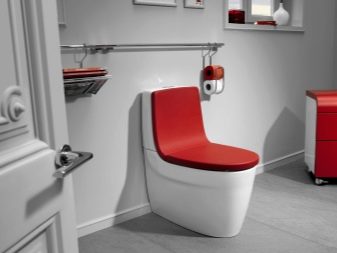

A hanging toilet has several benefits.
- Clean floor. The hanging model makes it possible to easily clean the toilet room, you can only use a mop, and not manually wade to difficult crevices, the floor is very easy to wipe.
- Design. The design looks stylish and modern, gives a feeling of free space, this adds comfort to the room.
- Silence when drawing water into the drain tank, since it is located in the wall.
- Great for private homes and public institutions (office buildings, entertainment complexes and large shopping centers).
In all other respects, there are no differences, because the contents of the tank, the mechanism of its operation, all the attached communications are identical to the floor models.
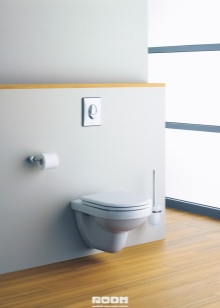

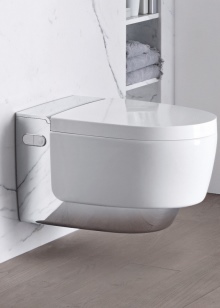
Suspended models also have some disadvantages.
- Price. The cost not only for the toilet is high, but installation, plasterboard wall-screen, fastening mechanism, tools and materials will also cost more.
- Labor intensity of installation. If the floor-standing toilet is fastened with only two bolts, then during the installation of the suspended one you will have to work hard, setting the height, installing the plasterboard wall and the installation that holds the entire structure.
- Not recommended for apartment buildings.The fact is that the pipes and plumbing of multi-storey buildings often fail and deteriorate, it will be problematic to get to the communications and to the barrel of the hanging toilet, for example, to shut off the water.


Hanging toilets are available in the following varieties:
- console type - standard suspended models of square shapes;
- a compact toilet - the most popular model, despite the difficulties in maintenance, has a leg that rests on the floor (not attached to the floor);
- corner toilet - a solution for rooms with non-standard wall arrangement.
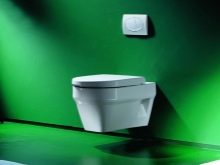
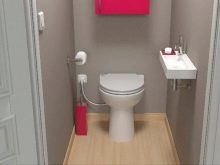
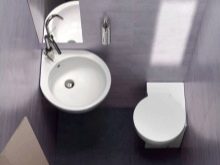
Dimensions and equipment
Despite the feeling of the shaky structure of the suspended type, they can withstand 400 kg of weight due to clear calculations, sizes and equipment.
The dimensions for standard models are as follows:
- 35 cm to 40 cm in height;
- 35.5 cm to 37 cm wide.
Floor-standing toilets have the same dimensions. The dimensions of corner and compact toilets are slightly smaller.
As for the toilet bowls, they can be divided into the following categories:
- small - the length is 54 cm, a great option for small rooms;
- medium - are 54-60 cm in length, are considered standard sizes;
- long - the length can be up to 70 cm, such bowls are designed for large people or customers with disabilities.
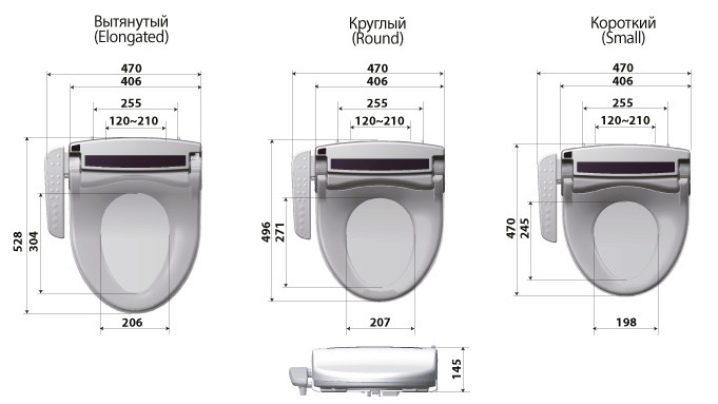
All support comes from the metal frame - the installation. It is equipped with rods that are responsible for increasing or decreasing the height. The installation is complete with studs, there are holes for threaded bolts. A small-sized drain tank is installed in a special niche in the upper part of the metal frame. The tank has side holes for connecting to the water supply. In the tank itself there is a float, a drain regulator, a knob for turning off or on the water, familiar to everyone.
Suspended models of the first release were distinguished by a very high price., but with a rise in popularity, domestic companies began to produce them, due to which the price became acceptable. In many modern models, the drain button protruding from the wall makes it possible to get close to the internal mechanisms and shut off the water if necessary.
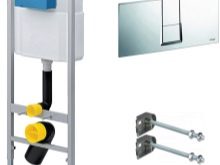
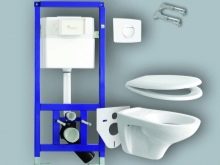
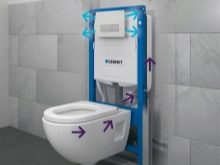
How to choose plumbing?
If the goal is to quickly install a standard toilet, then the choice will be floor toilets, where you do not have to spend a lot of time on measurements, time-consuming and long installation work. The price of these models is much lower than non-pendant ones.
But if the goal is to embody modern design solutions, then hanging models will be an excellent choice.
When installing this type of toilets, you need to take into account many nuances, for example, a toilet nozzle, because the difference of 2-3 cm that the nozzle can give usually leads to discomfort in using the model.
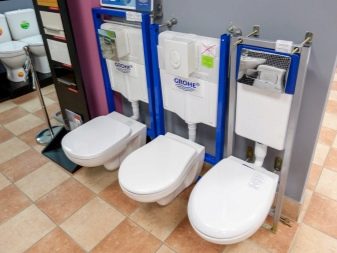
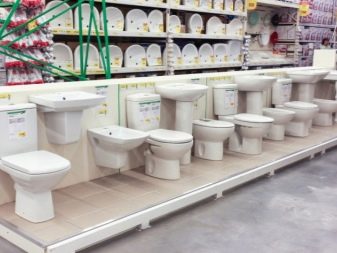
Standards and Installation
If you decide to install a wall-hung toilet yourself, then you need to know the correct sequence of actions and follow them. Floor standing toilets are easier because their heights are already in line with the standard. When installing, you need to take into account only one nuance: the installation of the toilet takes place after or before laying the floor.
In the second option, it is necessary to take into account the difference that will appear after laying the floor, for this you need to calculate the size of the floor to be installed and, if necessary, use a stand to increase the height.
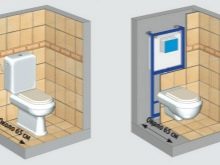
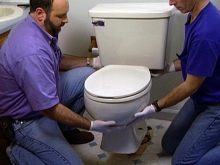
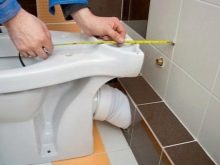
The sequence of actions should be followed when installing a floor-standing toilet.
- Choosing the correct location for the structure.
- Assembling the drain tank, studying the manufacturer's instructions, and attaching the pipe for the water supply to it.
- Preparation of the site selected for installation. To do this, you will need to clean the sewer compartment, insert an adapter (pipe) there. It should be lubricated with plumbing grease and the seal, which will protect against unpleasant odors. Cover the water and wipe the flooring dry.
- It is necessary to connect to the sewer and make markings for the fasteners. The corrugation must be sealed with a sealant before being attached to the drain.The toilet should be located in the middle between walls or other objects. It is necessary to substitute the toilet in the place where it should be installed, and make markings at the base (outline along the contour for the convenience of applying sealant).
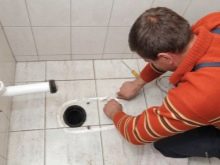
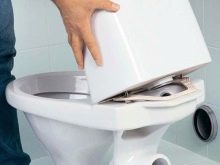

- Installing fasteners and applying a silicone gasket. If necessary, place spacers on the steel bolts.
- After installing the toilet, you need to connect all the pipes and check the drain.
- Install the tank cap.
- It is necessary to assemble and attach the rim for the toilet, treat the joints with sealant.
- After the installation of the entire structure, it is necessary to check whether everything is hermetically sealed, whether there are leaks, if detected, treat it with a hermetic agent again.
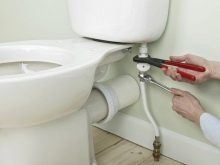
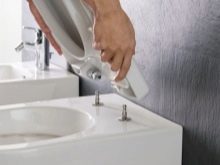
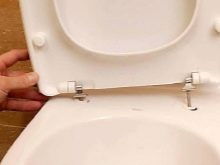
Installing a wall-hung toilet is similar to installing a floor-standing model, except for fixings and installation, which add complexity.
- You must choose a location for the installation. If the toilet room has a niche with all water pipes for supplying and outputting water, then it is recommended to install a wall-mounted toilet there, but if this is not possible, then you can make a plasterboard box, which will take 10-15 cm from the area of the room.
- First of all, you need to start installing the installation. It has fastening points: two at the bottom, at the base and two at the top, just above the tank. When installing the installation, you must carefully check the level. Alignment should be done with a special tool to avoid cracks, the structure must fit snugly against the plasterboard wall, otherwise leaks may appear.
- After installing the installation and checking it for evenness (since it will be difficult to fix something afterwards), a tank is installed, for which there is a special place. Further, the partition is assembled and the box itself is lined with the connection of all pipes.

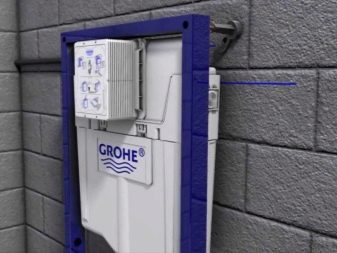
- The most difficult process is the height of the toilet. The standard height is 43 cm, if a children's toilet is installed, then the toilet can be hung lower, if for tall people, then higher. It is necessary to take into account all the nuances: the difference in height with and without a toilet nozzle, the difference in flooring, if the installation of the toilet is carried out before the flooring is installed. Considering all these nuances, you should raise or lower the level of the toilet.
- Next, the toilet itself is installed. It is attached to the installation with two heavy-duty bolts.
- The last step will be to install the drain button and check the installed structure for leaks.
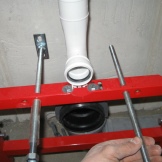
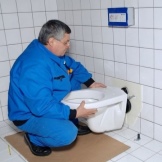
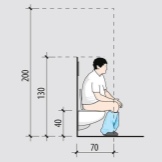
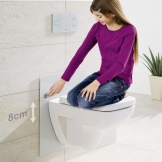
Tips & Tricks
The difficulty of the installation processes lies not in long-term work, but in the nuances, without taking into account which the toilet will quickly fail.
It is worth paying attention to the following recommendations of specialists:
- it is better to install any toilet as close to the sewer as possible;
- the drain button is installed at a height of 1 meter;
- the distance between the floor and the drain pipe should be 22-23 cm;
- all markings must be accurate, it is best to make them bold and prominent, measuring several times;
- before the drywall box is finally closed and revetted, the entire system should be checked for leaks and odors, otherwise it will no longer be possible to get to them;
- the assembly of the metal frame must correspond to the horizontal and vertical levels, if necessary, increase or decrease the slope using a device such as a building level;
- when tightening nuts on a ceramic surface, be careful not to scratch the surface.

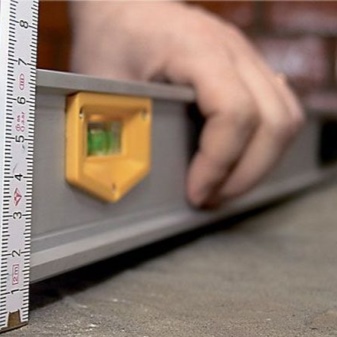
Thus, observing a certain sequence of actions and knowing some of the nuances, installing a wall-mounted or floor-standing toilet with your own hands will not be difficult, and the correct choice of height will add comfort.
See below for more details.













The comment was sent successfully.